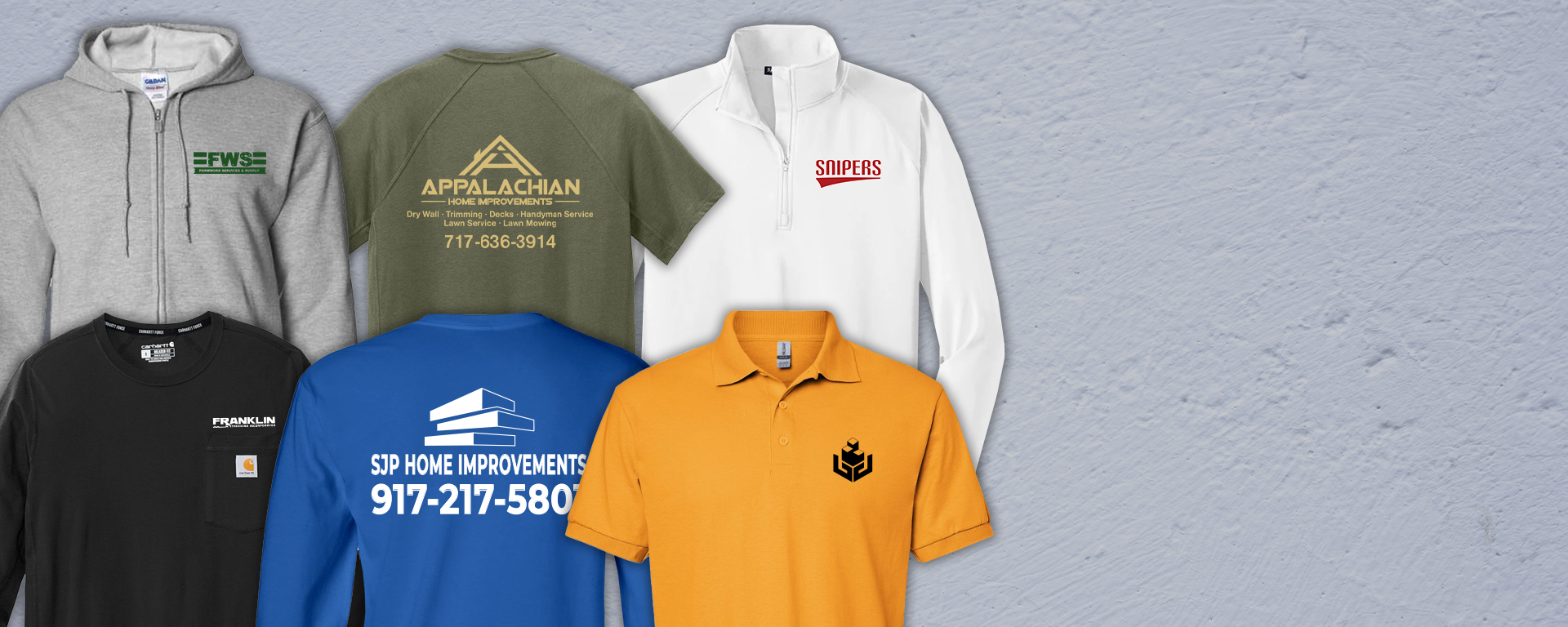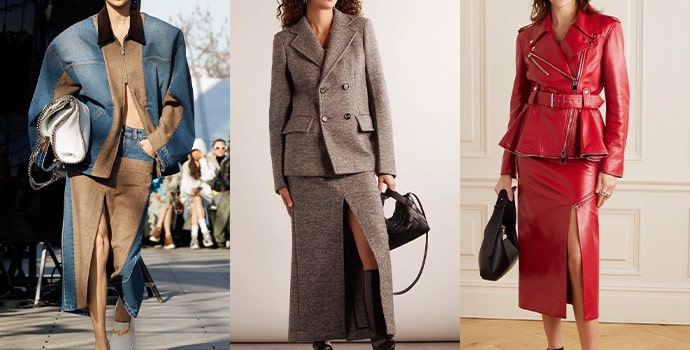How Branded Clothing Combines Fit, Function, and Fabric Innovation
Recognizing Garments: The Significance of Textile Options in Your Closet
The option of fabric in clothes plays a pivotal role in both aesthetic appeals and capability. Different products provide differing degrees of durability, convenience, and breathability, straight affecting the wearer's experience. Recognizing these nuances can improve one's closet considerably. Many forget exactly how these choices can impact not just personal style, yet also sustainability. What textile choices could redefine your wardrobe and straighten it with both style and responsibility?
The Role of Textile in Fashion and Performance

Typical Material Kinds and Their Features
When picking garments, comprehending the attributes of common textile types is important for making informed choices. Cotton, a widely-used all-natural fiber, is recognized for its flexibility, soft qualities, and breathability, making it appropriate for sportswear and everyday garments. Linen, an additional all-natural alternative, flaunts exceptional moisture-wicking homes and an unique structure, suitable for cozy climates.Wool, typically favored for its warmth and resilience, differs in fineness; merino wool is soft versus the skin, while coarser types are made use of for outerwear. Synthetic materials like polyester and nylon use resilience and resistance to creases, making them prominent for activewear and traveling garments. Lastly, blends, which incorporate synthetic and all-natural fibers, can enhance functionality while keeping convenience. By recognizing these textile features, individuals can pick apparel that aligns with their way of life and aesthetic choices.
Breathability and Convenience: Choosing the Right Fabrics for Various Environments
Choosing the best textiles for different environments can substantially enhance comfort and total wearability. Breathable materials are crucial in warm environments, as they enable air circulation and dampness evaporation. Fabrics such as cotton, linen, and moisture-wicking synthetics properly draw sweat away from the body, keeping the wearer cool and dry. Alternatively, in chillier climates, thicker fabrics like woollen or fleece give insulation while retaining breathability, guaranteeing warmth without overheating.Additionally, the choice of fabric weight plays an essential function; lightweight materials are more suitable for summertime, whereas heavier alternatives are matched for winter wear. Comprehending the distinct residential or commercial properties of each textile makes it possible for people to dress properly for varying weather. Eventually, selecting comfy and breathable materials customized to particular climates can greatly boost daily comfort and improve the total experience of using garments.
Longevity and Care: Just How Fabric Affects Long Life of Your Wardrobe
Picking the appropriate materials can considerably affect the resilience and care requirements of a wardrobe. Fabrics such as cotton and polyester are recognized for their resilience and simplicity of maintenance, making them optimal for day-to-day wear. In comparison, delicate materials like silk and shoelace need even more mindful handling and specialized cleaning approaches, which can increase the moment and initiative needed for care. Branded Clothing.Durability is likewise influenced by the fabric's weave and coating; securely woven textiles have a tendency to stand up to damage much better than freely woven choices. Additionally, artificial blends commonly provide boosted toughness, combining the most effective top qualities of numerous fibers.Understanding the treatment directions for each and every fabric is important, as incorrect washing or drying out i loved this can result in early wear. Ultimately, selecting long lasting products can cause a longer-lasting closet, lowering the regularity of substitutes and contributing to an extra sustainable fashion choice
The Impact of Textile on Fit and Shape

Lasting Material Choices: Making Eco-Friendly Decisions
The influence of material expands past fit and silhouette to encompass ecological elements, motivating an expanding interest in lasting textile options. Eco-friendly textiles, such as natural cotton, hemp, and Tencel, are getting traction amongst customers who focus on sustainability in their wardrobes. These materials are frequently produced with fewer chemicals and water, decreasing their eco-friendly footprint.Additionally, recycled fabrics, made from post-consumer waste, provide a cutting-edge solution to the fabric industry's contamination issue. Brands increasingly accept openness in their sourcing methods, permitting customers to make enlightened decisions concerning their purchases.Choosing sustainable fabrics not just sustains moral practices however also urges the fashion industry to take on more liable production methods. As awareness of ecological problems rises, people are advised to show this post on the lasting effect of their fabric selections, cultivating a movement in the direction of an extra ecologically aware and sustainable strategy to fashion.
Elevating Style: Just How Textile Can Change a Clothing
While several may concentrate on color and cut when picking a clothing, the choice of material plays a vital function in raising style and boosting overall appearance. Different materials communicate distinctive moods and messages; for instance, silk exudes high-end and refinement, while jeans uses a laid-back, kicked back ambiance. The texture and drape of a material can considerably modify the shape, with structured fabrics giving a refined look and softer ones producing a more fluid, unwinded aesthetic.Moreover, the weight of the material influences wearability throughout seasons. Lightweight fabrics like linen and cotton are perfect for summer, while heavier materials such as wool and velvet supply warmth and sophistication in chillier months. Comprehending material properties, such as breathability and stretch, likewise encourages people to make informed selections that boost convenience without jeopardizing style. Eventually, the best textile can transform a clothing from average to amazing, making it an essential consideration in any kind of wardrobe.
Regularly Asked Inquiries
Exactly how Do I Recognize the Fabric Web Content of My Clothing?
To identify fabric material, one can take a look at treatment labels, conduct burn tests for fiber identification, or get in touch with fabric swatches. These techniques assist set apart products, ensuring notified choices for apparel treatment and maintenance in everyday wear.
Can Textile Choice Affect My Mood or Self-confidence?
Material choice can significantly influence an individual's mood and self-confidence. Branded Clothing. Specific products might stimulate feelings of convenience or sophistication, while others can feel limiting or unflattering, ultimately affecting self-perception and emotional well-being throughout the day
What Fabrics Are Best for Sensitive Skin?
For people with delicate skin, natural textiles like linen, bamboo, and cotton are commonly advised. These products are breathable, hypoallergenic, and much less likely to create irritation, making them appropriate selections for comfort and skin health.
Exactly how Do I Appropriately Laundry and Take Care Of Various Fabrics?
To effectively wash and care for different fabrics, one should think about each product's particular requirements, including temperature setups, detergents, and drying approaches, guaranteeing durability and preserving the textile's original top qualities for perfect usage.
Are There Certain Fabrics for Athletic or Efficiency Use?
Sports or efficiency wear typically makes use of textiles such as nylon, spandex, and polyester. These products are created for moisture-wicking, breathability, and adaptability, enhancing motion and convenience throughout physical tasks while giving durability and assistance. Conversely, in chillier climates, thicker fabrics like woollen or fleece give insulation while preserving breathability, making certain heat without overheating.Additionally, the selection of material weight plays a vital role; lightweight textiles are preferable for summer, whereas larger alternatives are fit for wintertime wear. In contrast, delicate products More Bonuses like silk and lace require even more careful handling and specialized cleansing approaches, which can enhance the time and initiative needed for care.Durability is likewise influenced by the fabric's weave and finish; securely woven textiles often tend to stand up to wear and tear much better than loosely woven choices. In comparison, stiff textiles can limit motion but give a timeless, refined look.Moreover, the thickness and appearance of the textile can affect the visual perception of body form. The influence of material extends past fit and shape to incorporate environmental factors, prompting a growing passion in lasting material selections. The structure and drape of a material can drastically change the silhouette, with structured textiles giving a sleek appearance and softer ones developing a more fluid, kicked back aesthetic.Moreover, the weight of the textile influences wearability throughout periods.